NOTE: Baseball, Part 1, the Exhibition at the Depot Park Museum opens Saturday, October 26, at 1PM (power or no power!) The following post is a preview of Part 2, which will open in spring of 2020.
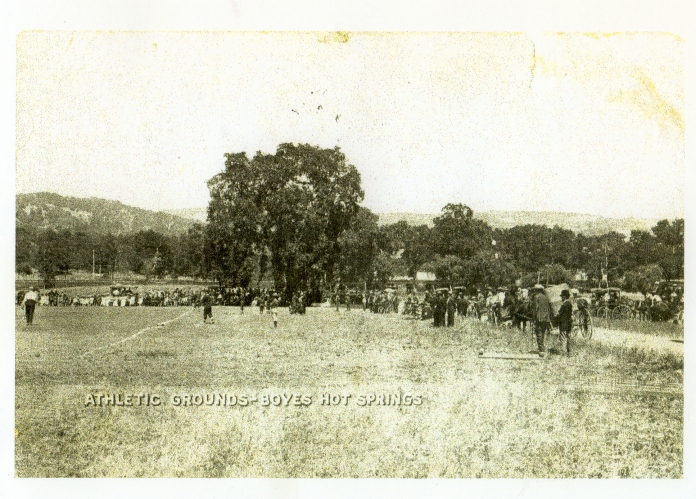
Baseball Park circa 1910 (Sonoma Valley Historical Society)
Early in the twentieth century, the climate and healing waters of Sonoma Valley, Boyes Hot Springs in particular, were attractive to Pacific Coast League baseball teams looking for places to train.
Seals Training
“Boyes’ Hot Springs is rapidly becoming recognized as one of California’s chief health resorts. A few years ago this famous resort was known only to a favored few in Sonoma and Marin Counties, who were aware of the marvelous healing powers of its medicinal waters. Through the combined efforts of Dr. Parramore of Mill Valley, and former Under Sheriff Litchenberg of San Rafael, both Marin County boys, the facilities and accommodations of the springs have been developed until now it is able to house the immense number that flock to this delightful and health giving spot. Against a State wide competition the Seals have chosen Boyes’ Hot Springs for their Spring training quarters. Exhibition games will be given there in recreation park that stands on the hotel property. The owners of the teams pronounce the facilities for (training) the best in the State. There is a large swimming tank, hot and cold water baths, plunges, a gymnasium, and the best climate in California.” Sausalito News, Volume 28, Number 48, 30 November 1912 — Page 1
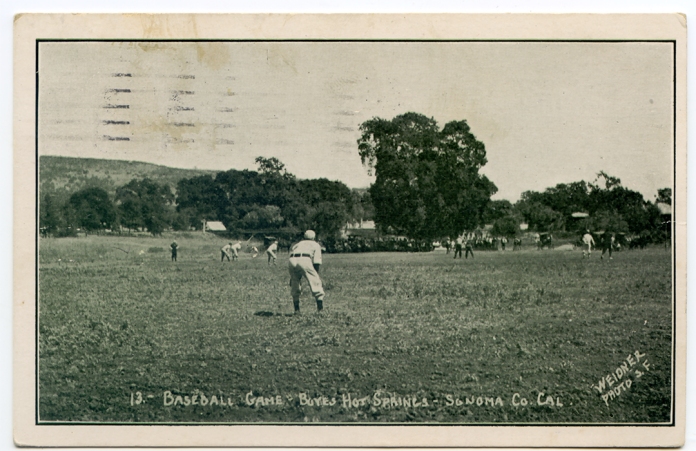
Post marked 1914
The League was founded in 1903. Teams initially were not associated with the major leagues and PCL baseball was considered an “outlaw” league until 1904 when an agreement was settled with Organized Baseball which made the PCL a Class A league. Still the PCL was “the only game in town” west of St. Louis until the Giants and Dodgers moved to California in 1958. Star players of the League included the DiMaggio brothers and Ted Williams which tells you something about the level of play.
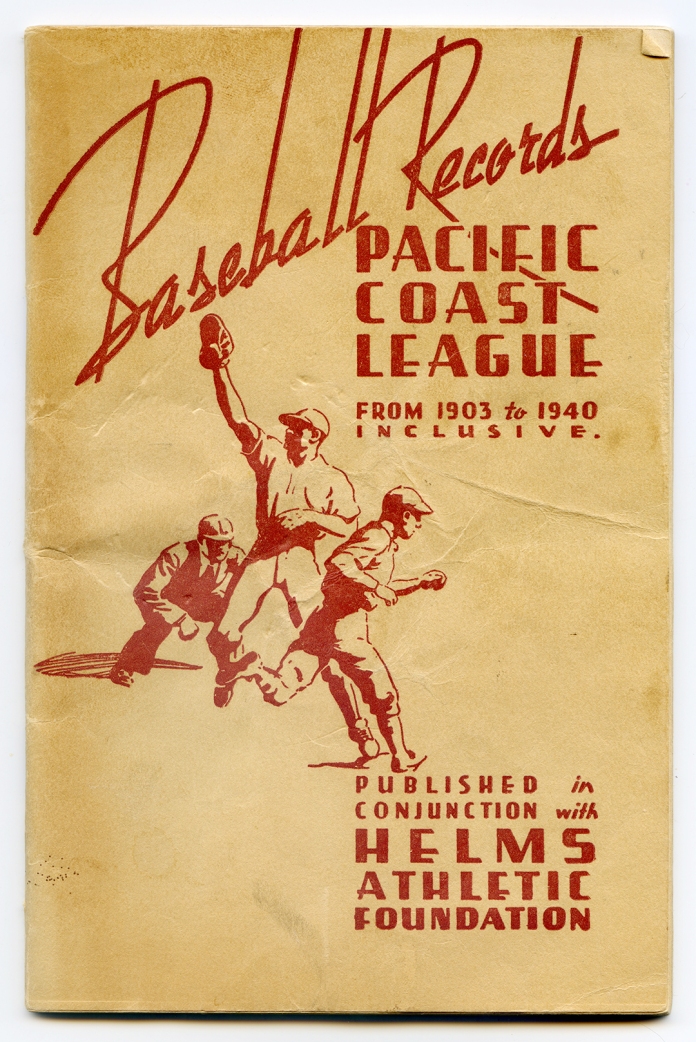
We know that the San Francisco Seals, a perennial powerhouse, were holding spring training at Boyes Springs as early as 1912. In that year, as an SF Chronicle headline read, an “ Eight Acre Ball Park (is) Being Built at Boyes Hot Springs.” The Chron goes on,…” it seems certain that the Seals will have the largest ball grounds in the world (!)-and very likely the finest-in which to prepare for their pennant struggle.” Manager Cal Ewing “…is highly enthusiastic about the new quarters.” In 1913 the SF Call, in an article about opening day, declared “The Boyes Springs rooters were the most conspicuous of the bunch. Headed by Doctor Parramore and Rudie Litchenberg (sic), they arrived at noon in a big auto and they drove direct to the ball park to root for the Seals.”
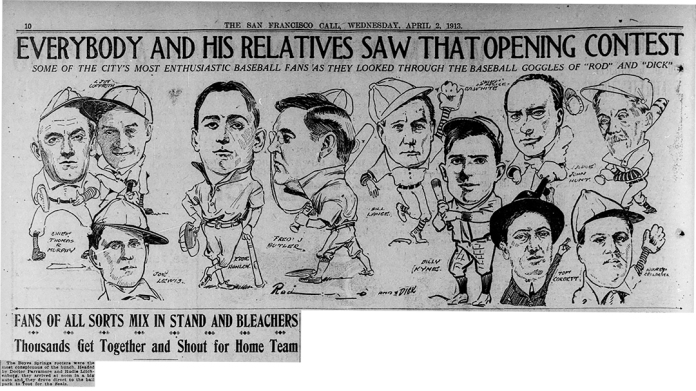
SF Call, 1913
Building new parks for the Seals happened every few years, it seems. In 1913, under the heading “Interesting Items From El Verano and Vicinity,” the Index tribune reported that “Dr. E.L. Parramore and R.G. Lichtenberg (owners of the Boyes Bath House) of Boyes Springs were in the city on Friday of last week. Their visit was for the purpose of purchasing the lumber to build the fence around the new ball park, which has been laid out for the use of the Seals, who will do their spring training there.”
This is probably the field that endured until the 1950s. It was also very close to the Boyes Bath House. The land was surrounded by the Olive Grove subdivision in 1947 (see map),and completely subsumed by housing in the following decade. Originally named Fetters Field, it later became Lichtenberg Field. Today, De Chene Ave. roughly follows the old outfield fence.
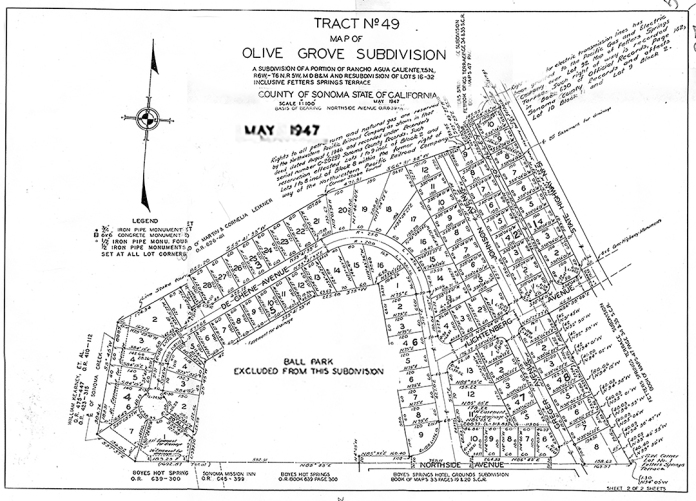
Sonoma County Recorder’s Office
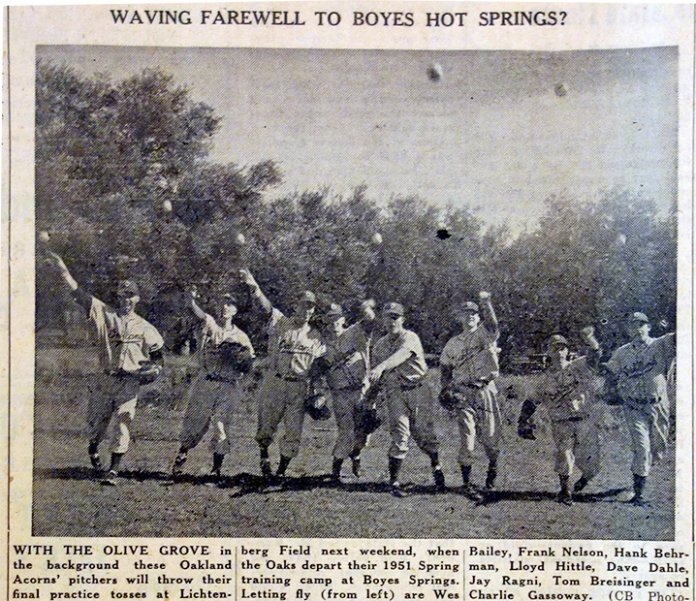
Index Tribune, 1951
The Seals weren’t the only team to train at Boyes Hot Springs. In 1950 the Twin Falls farm team of the Yankees were there; in 1951, the Oakland Oaks. The Index Tribune put the story of their arrival on the front page, with a photo of manager Mel Ott. Since one of the original attractions for teams was the healthful waters, it was natural that some players would endorse the product. The Oakland Tribune showed two Oaks pitchers enjoying Boyes Springs mineral water after a workout in 1947.
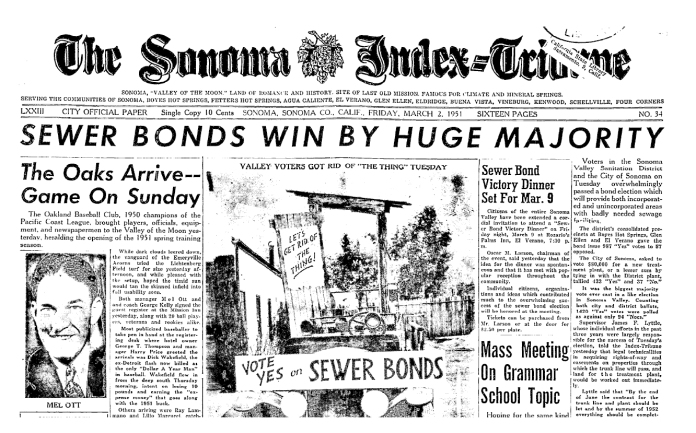
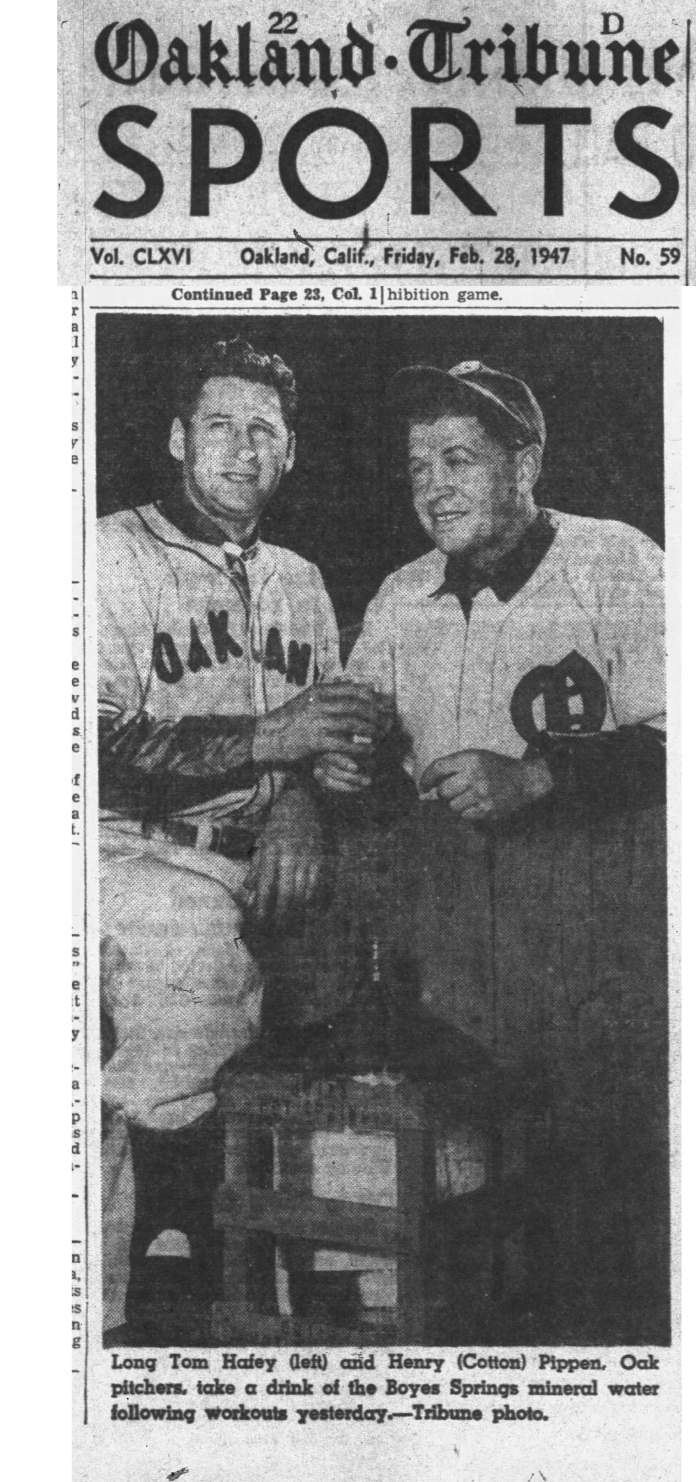
Some of the major leaguers who came to the valley for training ended up settling there. One such was Sam Agnew. 
According to the Society for American Baseball Research, “Sam Agnew is best remembered for being the catcher for both of Babe Ruth’s pitching victories in the 1918 World Series.” Agnew started in baseball with the Vernon team of PCL in 1912. His Major League debut came with the St. Louis Browns in 1913. He started as catcher for the Browns through 1915, when he was traded to the Red Sox. While a St. Louis player he had the distinction of being called out while sitting in the dugout: the team was found to be batting out of order and he was supposed to at the plate at the time.
Agnew opened a service station in Boyes Springs in 1935. It was at the corner of Vallejo St. and the Highway (where the Barking Dog parking lot is today.) Agnew died in 1951 in Sonoma.
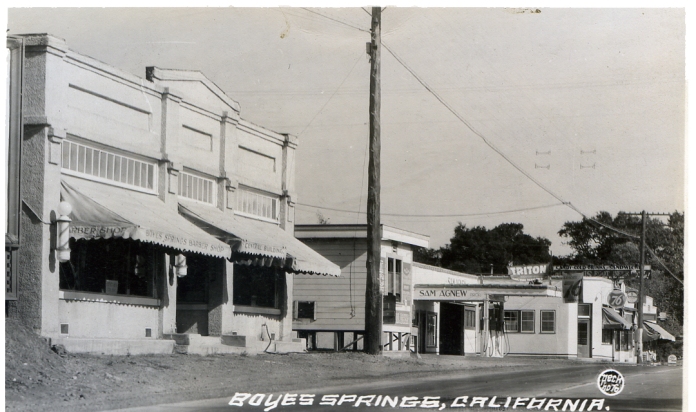
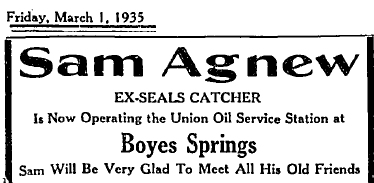
AND THAT’S JUST A SAMPLE! STAY TUNED…
Index Tribune courtesy of the Sonoma Valley Historical Society. All others as noted or Author’s collection.
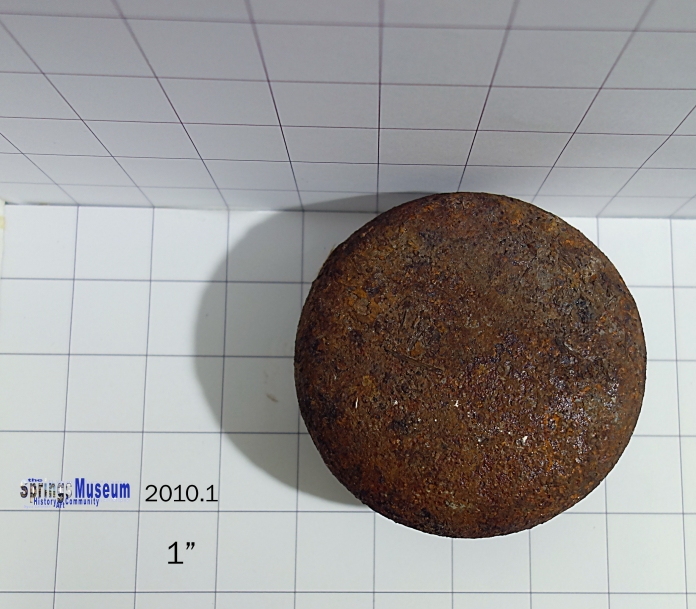
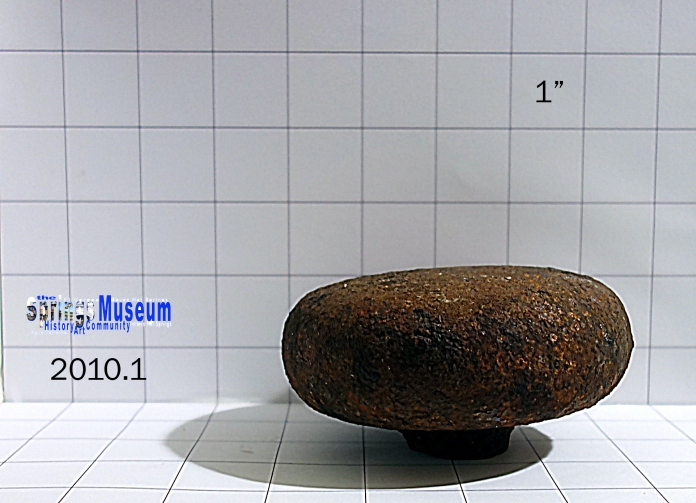 Ovoid object of cast iron, heavily rusted, weight about 9 lbs, found, sometime in 2010, in the soil at the southeast corner of lot # 6 block 12 of the Boyes Springs Sudvivison A, which was platted in October of 1913. It appears to have been attached to a shaft, of which there is a broken stub. It’s too big and heavy to be doorknob: Possibly a surveyor’s corner marker.
Ovoid object of cast iron, heavily rusted, weight about 9 lbs, found, sometime in 2010, in the soil at the southeast corner of lot # 6 block 12 of the Boyes Springs Sudvivison A, which was platted in October of 1913. It appears to have been attached to a shaft, of which there is a broken stub. It’s too big and heavy to be doorknob: Possibly a surveyor’s corner marker.